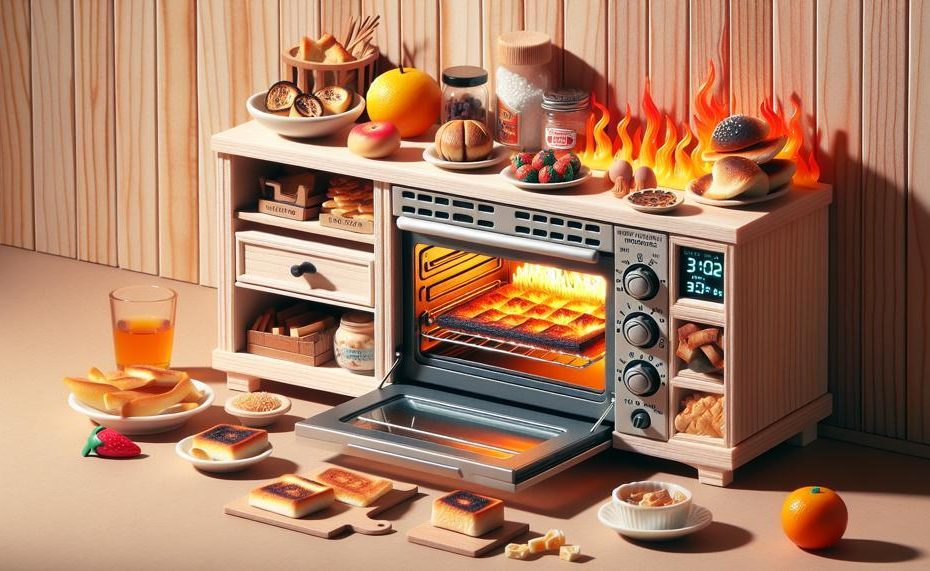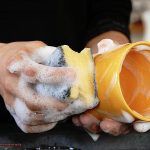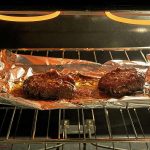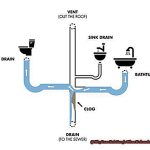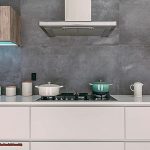Are your pristine kitchen cabinets falling victim to the scorching heat of your toaster oven? Does the mere thought of opening that door make you cringe, knowing the damage it can cause? You’re not alone in this struggle.
Many homeowners face the challenge of protecting their cabinets from the intense heat generated by these handy appliances. But fear not, for we have some expert tips and tricks to keep your cabinets looking flawless.
Say goodbye to unsightly burns and discoloration with our guide on how to safeguard your cabinets from toaster oven heat.
In this guide, we’ll cover everything you need to know, including:
- The potential harm caused by toaster oven heat on cabinets
- Choosing the perfect location for your trusty appliance
- Utilizing a heat-resistant mat or tray as a protective barrier
- Installing a cabinet shield or guard for added defense
- Regularly cleaning and maintaining your cabinets for long-lasting beauty
Contents
- 1 How To Protect Cabinets From Toaster Oven Heat?
- 2 What Is The Best Way To Protect Cabinets From Toaster Oven Heat?
- 3 How Can You Tell If Your Cabinets Are Too Close To The Toaster Oven?
- 4 What Happens If Your Cabinets Are Too Close To The Toaster Oven?
- 5 How Can You Prevent Your Cabinets From Being Damaged By The Toaster Oven?
- 6 What Are The Signs Of Cabinet Damage From The Toaster Oven?
- 7 How Can You Tell If Your Cabinets Are Too Close To The Toaster Oven?
- 8 What Happens If Your Cabinets Are Too Close To The Toaster Oven?
- 9 How Can You Prevent Your Cabinets From Being Damaged By The Toaster Oven?
- 10 What Are The Signs Of Cabinet Damage From The Toaster Oven?
- 11 Conclusion
How To Protect Cabinets From Toaster Oven Heat?
Toaster ovens are undoubtedly a convenient appliance for quick cooking and reheating, but their intense heat can cause damage to nearby cabinets.
Protecting your cabinets from this heat is crucial to avoid expensive repairs or replacements.
To ensure the safety and longevity of your cabinets, here are some practical and effective ways to protect them from the intense heat of a toaster oven:
Utilize a heat shield or barrier
A sturdy and heat-resistant heat shield can effectively deflect the heat away from your cabinets.
This can be in the form of a metal or ceramic tray placed on top of the toaster oven, or a specially designed heat guard that attaches to the back of the appliance.
Consider investing in a toaster oven mat or liner
Toaster oven mats or liners are another option for insulating your cabinets from the intense heat.
These come in various types and sizes and can be easily placed on top of the cabinet or under the toaster oven.
Mindful placement of the appliance
Proper placement of your toaster oven is key in preventing heat damage to cabinets. Make sure to leave at least six inches of space on all sides of the appliance to prevent heat buildup.
Additionally, keep it away from flammable materials and consider installing a shelf above your regular oven for added protection.
Install a cabinet fan or ventilation system
A cabinet fan or ventilation system can significantly reduce the heat inside cabinets and improve overall air circulation in your kitchen.
This is especially helpful if your cabinets are located near the toaster oven.
Consider relocating the toaster oven
If possible, it may be best to relocate your toaster oven to a different countertop or freestanding surface that is farther away from your cabinets.
This will minimize heat transfer and reduce potential damage.
Remember to always use caution when using a toaster oven, especially when toasting bread, as it can quickly cause fire if left unattended.
What Is The Best Way To Protect Cabinets From Toaster Oven Heat?
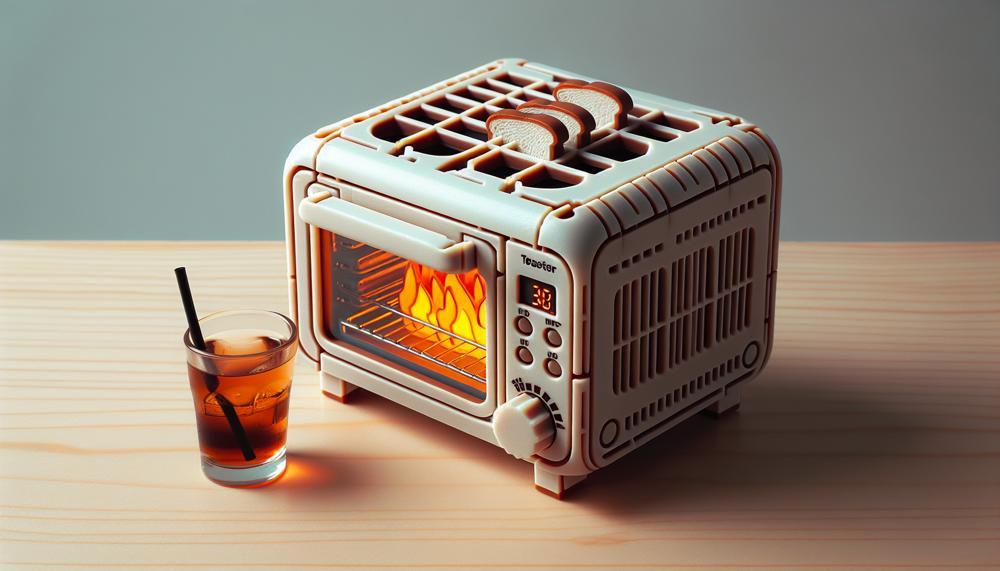
To safeguard cabinets from the intense heat of a toaster oven, adequate ventilation is imperative. This can be achieved by utilizing a toaster oven with an integrated fan, positioning it farther away from cabinets, and using a heat-resistant mat or lining to protect the surface.
In addition, proper usage and maintenance of the toaster oven can also aid in preventing any potential damage.
In compact kitchens with limited space, it is crucial to utilize space effectively and keep countertops clear.
This entails avoiding overcrowding appliances and ensuring that cabinets are not in close proximity to them. Indications that cabinets may be too close to the toaster oven include difficulty opening them, cluttered countertops, smoke/fumes/odors emanating from the oven, or warm cabinets.
A highly effective method to protect cabinets from heat damage is by using a toaster oven liner. These liners are typically constructed from heat-resistant materials such as silicone or fiberglass and can be placed at the bottom of the toaster oven to catch any spills or crumbs.
Additionally, it is important to avoid placing the toaster oven too close to cabinets, as this can result in warping, melting, or other types of damage.
Regular cleaning and maintenance of the toaster oven can also help prevent damage to cabinets.
Be sure to promptly clean up any spills or crumbs and avoid using harsh chemicals that could potentially harm the finish of the cabinets.
How Can You Tell If Your Cabinets Are Too Close To The Toaster Oven?
When attempting to ascertain the appropriate distance between your kitchen cabinets and toaster oven, there are numerous factors to take into account. These include the specific heat output of your particular toaster oven model, the layout of your kitchen, and the level of exposure to heat.
One approach for determining the safe distance is by consulting the manufacturer’s instructions for your toaster oven. These guidelines may suggest a recommended distance for proper ventilation and safety measures.
Another method is to utilize a heat shield or barrier, which can be placed on the side or back of the toaster oven in order to redirect heat away from the cabinets. A toaster oven mat or liner can also provide protection by absorbing and dissipating the heat.
In addition, implementing a cabinet fan or ventilation system can aid in circulating air and decreasing heat buildup in the surrounding area.
While these options may require professional installation, they can effectively prevent heat damage to your cabinets.
If possible, it is best to leave several inches of space between the toaster oven and any materials that are combustible, such as cabinets.
This will create a buffer zone and decrease the risk of potential heat damage.
What Happens If Your Cabinets Are Too Close To The Toaster Oven?
Placing cabinets too closely to a toaster oven can result in various forms of damage. The most common culprit is the heat emitted by the oven, which can cause discoloration, warping, and even melting of the cabinet material. Such damages can lead to costly repairs or even replacement of the affected cabinets.
Moreover, having cabinets in close proximity to a toaster oven also poses safety hazards. If the cabinets are constructed from flammable materials, they may easily catch fire when exposed to high levels of heat from the oven. Additionally, having the toaster oven placed too close to cabinets can make it challenging to properly clean and maintain both appliances.
If you do happen to notice any damage to your cabinets caused by a toaster oven, it is vital to address it promptly to prevent further harm. This may involve repairing or replacing affected areas or even replacing the entire cabinet if necessary.
How Can You Prevent Your Cabinets From Being Damaged By The Toaster Oven?
To prevent heat damage caused by a toaster oven, there are practical and effective methods you can implement to protect your cabinets.
These include installing a heat shield or barrier, using a toaster oven mat or liner, keeping a safe distance, choosing a toaster oven with a built-in heat shield, installing a cabinet fan or ventilation system, moving the toaster oven to a different location, and considering materials with high thermal conductivity for an effective heat shield.
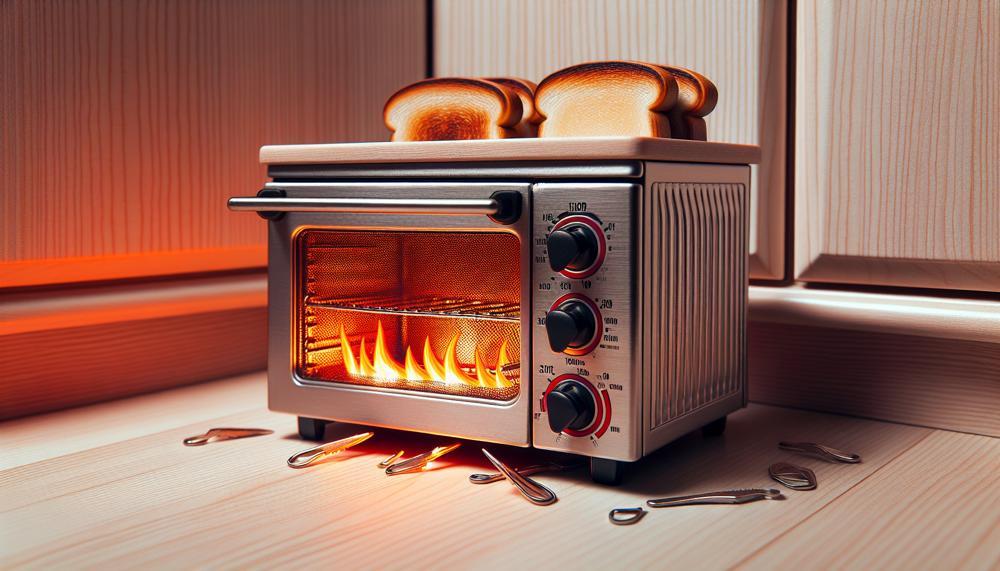
| Techniques | Benefits | Drawbacks |
| Installation of a heat shield or barrier | Effectively deflects heat away from the cabinets | May require professional installation and can be expensive |
| Use of a toaster oven mat or liner | Provides insulation and protection for cabinets | May need regular replacement and may not be as effective for higher temperatures |
| Maintaining a safe distance | Easily achievable and cost-effective | Cabinets may still be exposed to some heat and require frequent cleaning |
| Selection of a toaster oven with a built-in heat shield | Adds extra protection without additional installation or cost | May limit options for toaster ovens and may not completely prevent heat damage |
| Installation of a cabinet fan or ventilation system | Dissipates heat and improves air circulation in the kitchen | May require professional installation and can be costly |
| Moving the toaster oven to a different location | Reduces heat exposure on cabinets and is easily achievable | May limit counter space and may not completely prevent heat damage if cabinets are still nearby |
| Consideration of materials with high thermal conductivity for an effective heat shield | Provides a strong barrier against heat and is cost-effective | May require DIY skills and may not be aesthetically pleasing |
In addition to these methods, it is crucial to regularly clean and maintain both the toaster oven and cabinets to prevent any buildup of grease or debris that could contribute to heat damage.
It is also recommended to inspect cabinets for any signs of damage or discoloration and address them promptly to prevent further harm.
What Are The Signs Of Cabinet Damage From The Toaster Oven?
There are various indications that may imply your cabinets have been harmed by the intense heat of a toaster oven. These include:
- Smoke or fumes emanating from the toaster oven or surrounding cabinets
- Unfamiliar odors, such as burning or melting plastic
- Warm cabinets, especially in the vicinity of where the toaster oven is situated
- Physical damage to the cabinets, such as warping or discoloration
If you observe any of these signs, it is crucial to address the issue immediately in order to prevent further harm to your cabinets.
To safeguard your cabinets from potential heat damage caused by a toaster oven, there are several measures that can be taken:
- Proper Ventilation: Ensure your toaster oven is adequately ventilated according to the manufacturer’s instructions. This will aid in preventing excessive heat buildup and potential damage to nearby cabinets.
- Use a Toaster Oven with a Built-In Fan: Consider investing in a toaster oven equipped with a built-in fan, which can help circulate hot air and decrease the chances of heat damage to adjacent cabinets.
- Keep It Away from Cabinets: Place your toaster oven away from cabinets, countertops, and other surfaces that may be sensitive to heat. If it must be positioned on top of a cabinet, utilize a heat-resistant mat or tray underneath to shield the surface.
- Regular Cleaning and Maintenance: Keep your toaster oven clean and use it correctly for its intended purpose. This will aid in preventing any accumulation of debris or residue that could potentially cause harm.
- Avoid Clutter: In smaller kitchens, strive to maintain clear countertops and avoid clutter by not placing cabinets too close to appliances like a toaster oven.
- Use a Toaster Oven Liner: Consider utilizing a toaster oven liner to protect your cabinets from heat and spills. These liners are specially designed to withstand high temperatures and can easily be cleaned or replaced if necessary.
How Can You Tell If Your Cabinets Are Too Close To The Toaster Oven?
To help you decide if your cabinets are too close to your toaster oven, here are some things to think about:
Space and ventilation
To keep the oven from getting too hot, toasters need room for air to flow around them. If your drawers are right above your stove or oven, there should be at least 24 inches of space between them.
Heat resistance
Due to the heat, some cupboard materials may bend or change colour over time.
Height
Most upper shelves are 18 inches, or 1 foot and 6 inches, high from the counter. This makes room for toaster ovens and blenders.
Clearance
Between the cooking area and the bottom of your upper cabinet on an electric stove, there should be 30″ of space. You should have 36″ of space around a gas stove.
What Happens If Your Cabinets Are Too Close To The Toaster Oven?
The positioning of cabinets plays a crucial role in the safety and effectiveness of a toaster oven. When cabinets are too close to the toaster oven, it can result in heat damage and potential safety hazards.
The intense heat emitted from the toaster oven can cause discoloration, warping, or even fires in the cabinets. This not only ruins your cabinets but also poses a danger to your home and personal well-being.
Proper placement of cabinets is vital in preventing these issues. It is recommended to position cabinets at least 3 inches away from the toaster oven to allow for proper ventilation and reduce the risk of heat damage.
The material and finish of your cabinets should also be taken into consideration when placing them near a toaster oven. Heat-sensitive materials such as wood or laminate may require extra protection, while heat-resistant materials like metal or glass may be better suited.
So, following manufacturer’s instructions is crucial when using a toaster oven near cabinets. Most toaster ovens come with specific recommendations for spacing and usage, so it is important to read and adhere to these guidelines for optimal safety and functionality.
How Can You Prevent Your Cabinets From Being Damaged By The Toaster Oven?
Preventing cabinets from heat damage caused by a toaster oven can be achieved through various practical and effective methods. These include utilizing a heat shield or barrier, a toaster oven mat or liner, maintaining a safe distance between the appliance and cabinets, and implementing a cabinet fan or ventilation system.
- Utilizing a heat shield or barrier: A heat shield acts as a physical barrier that deflects heat away from cabinets and should be made of durable, heat-resistant materials. This can include metal, ceramic, or stone. You can purchase a pre-made heat shield or create your own using these materials.
- Using a toaster oven mat or liner: Mats and liners designed specifically for toaster ovens are effective in insulating cabinets from heat. They come in two types: non-stick and silicone. It is crucial to carefully follow the manufacturer’s instructions for installation and maintenance to ensure the best protection for your cabinets.
- Keeping a safe distance: The placement of the toaster oven can greatly impact the surrounding areas. It is important to keep it at a safe distance from flammable materials and walls that may restrict airflow. This will not only prevent heat damage to your cabinets but also reduce potential safety hazards.
- Implementing a cabinet fan or ventilation system: Installing a cabinet fan or utilizing your kitchen’s ventilation system can help dissipate heat and improve air circulation in the kitchen. This will not only protect your cabinets but also prevent potential safety hazards.
- Consider relocation: If finding an appropriate location for your toaster oven proves difficult, consider moving it to another area of your kitchen. This may require rearranging items, but it will ensure that your cabinets are safeguarded from heat damage.
Protecting cabinets from heat damage caused by a toaster oven is crucial for maintaining their appearance and functionality. By following these practical and effective methods, you can ensure that your cabinets remain in top condition while using your toaster oven.
What Are The Signs Of Cabinet Damage From The Toaster Oven?
Toaster ovens can generate a substantial amount of heat during use, and if not properly managed, this heat can lead to cabinet damage. It is crucial to be knowledgeable about the signs of cabinet damage from a toaster oven to prevent costly repairs or replacements. Here are some tips to help you determine if your cabinets have been affected by the heat from a toaster oven.
Observe for visible signs
The most apparent indication of cabinet damage from a toaster oven is visible harm.
This may include discoloration, warping, or even charring of the cabinet material. If you notice any of these signs, it is likely that the heat from the toaster oven has caused damage to your cabinets.
Check for unusual odors
Excessive heat exposure from a toaster oven can result in unusual smells emanating from your cabinets.
This could be due to the burning of cabinet materials or any food particles that may have fallen into the toaster oven, producing smoke and fumes.
Feel for warm cabinets
A simple way to tell if your cabinets have been damaged by the heat from a toaster oven is by touching them.
If they feel hot to the touch, it is likely that the heat from the toaster oven has caused damage to the cabinets.
Watch out for smoke or fumes
If you see smoke or fumes coming from your toaster oven while in use, it is a clear indication that the heat is too high, potentially damaging your cabinets.
Consider using a liner
To protect your cabinets from heat damage, consider using a toaster oven liner.
These liners are made of heat-resistant materials and can act as a barrier between the toaster oven and your cabinets.
Maintain a safe distance
When using a toaster oven, make sure it is placed at least 6 inches away from your cabinets to prevent any potential heat damage.
Keep your toaster oven clean
Regularly cleaning your toaster oven ensures proper functioning and prevents any buildup of food particles that could cause smoke or fumes, potentially damaging your cabinets.
Conclusion
In summary, safeguarding your cabinets from the intense heat of a toaster oven is essential in preserving their pristine appearance and avoiding expensive repairs.
To achieve this, you can utilize various methods such as heat shields, mats or liners, strategic placement, and regular maintenance.
Additionally, investing in a cabinet fan or ventilation system can greatly improve air circulation and minimize the risk of damage. Always exercise caution when using a toaster oven to prevent any accidents.
With these expert tips and tricks at your disposal, you can bid farewell to unsightly burns and discoloration on your kitchen cabinets.
Keep them looking flawless for years to come by implementing these simple yet effective measures.
